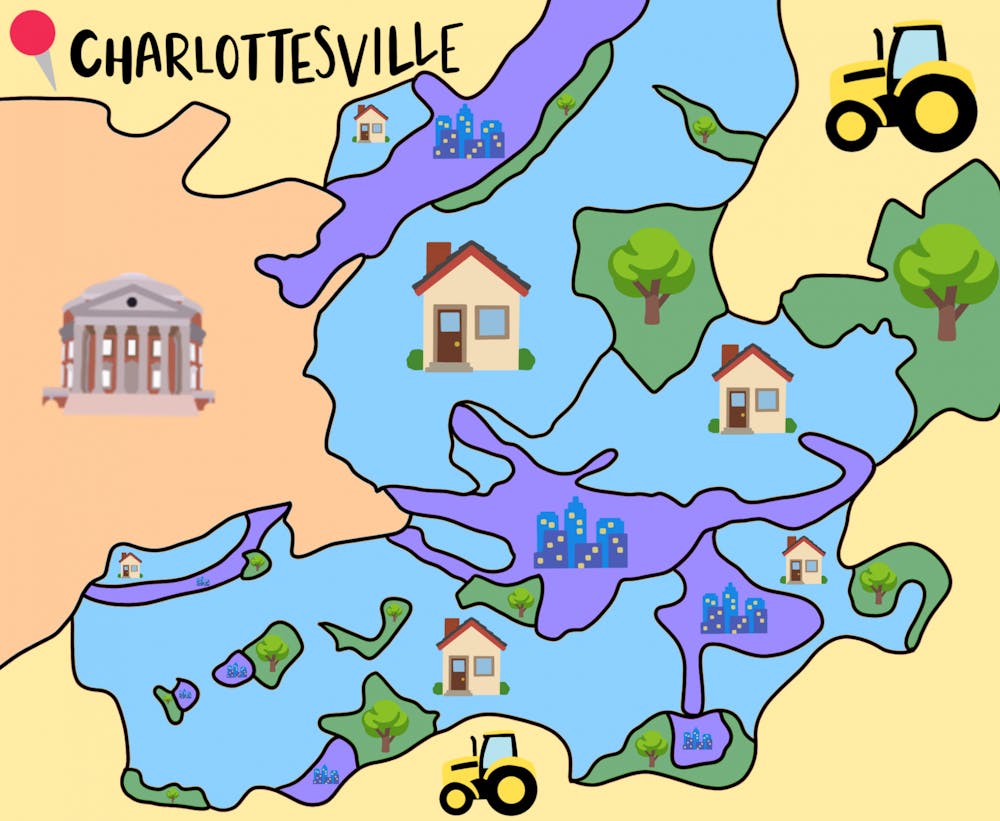Since 2001, seagrass meadows have been gradually returning to Virginia waterways for the first time in over 65 years, which has inspired research on its environmental impact, including greenhouse gas emissions and carbon sequestration.
The University-operated Coastal Research Center and Nitrogen Working Group are exploring how to reduce such emissions — through seagrass, food equity, and more — by creating models designed to quantify emissions. This research represents a combined dynamic sustainability initiative with the potential to inform more efficient approaches to climate change mitigation.
Seagrass provides many benefits to the environment, such as increasing water clarity, reducing coastal erosion, increasing marine life and sequestering carbon in its sediment. On the other hand, methane, a potent greenhouse gas, is produced in shallow aquatic sediments due to carbon degradation where it seeps back up into the atmosphere.
Class of 2022 alumnus Davis Coffey played a key role in spearheading this research. He spent last summer at the CRC researching methane bubble emissions in marine environments using underwater microphones and now works for the CRC full-time.
Coffey was a recent recipient of the Harrison Undergraduate Research Award, a research grant of up to $4,000 toward a research objective set by a student and $1,000 for a faculty mentor. In conjunction with the award, Coffey was able to conduct his research via a funded research experience.
Coffey began working with Environmental Science Prof. Peter Berg in 2020 on eddy covariance, an atmospheric measuring technique that observes exchanges of gasses, energy and momentum between ecosystems and the atmosphere.
Berg is now researching how sound can be used to measure gas emissions in aquatic seagrass ecosystems. This concept came in collaboration with CRC colleagues.
Methane gas emissions are hard to measure because it is difficult to pinpoint where they seep out of the sea floor. Methane has a global warming potential 25-35 times higher than carbon dioxide, so quantifying how much methane is released into the atmosphere is important in mitigating climate change.
“I thought, hey, maybe you can hear these bubbles,” Berg said. “Then maybe, we can analyze the sound recording so we know how far away the bubbles are coming up from where the microphone is, and based on the acoustic fingerprint of the bubble, we can determine how big it is.”
Coffey works with Berg on analyzing blue carbon — carbon captured in ocean and coastal ecosystems — in seagrass meadows, using hydrophones to locate and measure methane seeps from seagrass sediment.
“We chose methane in the topic as a whole because we're trying to develop more of a comprehensive idea of greenhouse gas flux within these seagrass meadows on the Eastern Shore,” Coffey said. “It's important because there are huge stretches of the seagrass beds out there on the Eastern Shore that have been restored, and they're productive ecosystems that play an important role in global carbon cycling as well as blue carbon sequestration and storage.”
During his summer at the CRC, Coffey located and recorded sounds from methane bubble emissions in the seagrass and has been working to determine the precise volume of the bubbles by the frequencies it produced.
In addition to his methane research, Coffey also worked with the Nitrogen Working Group, led by Environmental Sciences Prof. Jim Galloway. The NWG studies nitrogen emissions, and they are now developing nitrogen footprints in Albemarle County and the city of Charlottesville.
Coffey focused on food equity in relation to nitrogen usage in order to create a food equity map to pinpoint and recommend local eateries that release less nitrogen while considering food scarcity and availability.
Fertilizers in soil produce nitrous oxide, a greenhouse gas that lingers in the troposphere and damages the ozone layer. U.Va. Dining has set out to combat food-related nitrogen emissions by utilizing ingredients that produce less nitrogen, such as replacing some beef products with other protein sources, like beans or mushrooms.
In 2019, the Board of Visitors set a goal to decrease the University’s nitrogen footprint 30 percent from its 2010 level by the year 2030. As of 2017 — the most recent year for which data is available — investing in solar power and reducing coal and natural gas, in collaboration with U.Va. Dining, had already decreased nitrogen usage by 23 percent.
Graduate College student Libby Dukes, co-chair of the Nitrogen Working Group, is studying carbon, nitrogen and phosphorus footprints in Albemarle County and Charlottesville. Dukes is working on developing an integrated tool to see how production strategies impact greenhouse gas footprints in jurisdictions of Charlottesville.
“[Coffey] works with me to finalize calculations for the Albemarle Country nitrogen footprint, so he’s worked a lot with [agricultural] data and how that could affect the nitrogen footprints,” Dukes said. “[He is] working on a food map so we can tailor our scenarios to include equity into these calculations”.
The NWG and CRC intend to expand on Coffey’s research and continue developing the food equity map for other cities and counties across the country.







